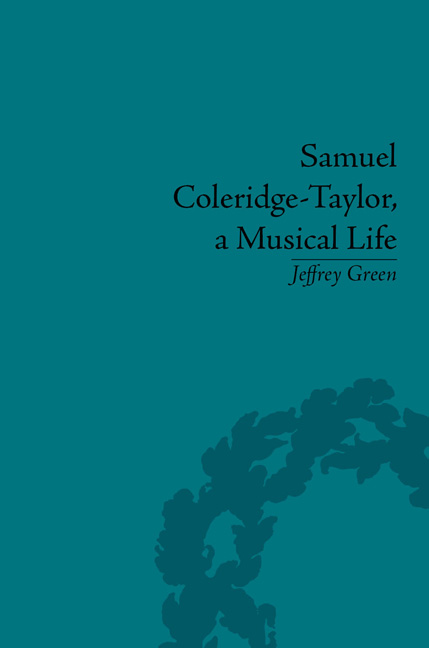Book contents
- Frontmatter
- CONTENTS
- Dedication
- Acknowledgements
- List of Figures
- Introduction
- 1 The Early Years
- 2 The Royal College of Music
- 3 The Promising Young Composer
- 4 The Wedding Feast
- 5 ‘A Sentiment Prevalent Here’
- 6 Intensifying the Effect
- 7 The International Star
- 8 A Stalwart Member of the Profession
- 9 A ‘Definite Place for the Negro in the World's History’
- 10 A Tale of Old Japan
- 11 Requiem
- 12 The Legacy
- Postscript
- Appendix 1 The Song of Hiawatha
- Appendix 2 Further Reading
- Notes
- Works Cited
- Index
Appendix 1 - The Song of Hiawatha
- Frontmatter
- CONTENTS
- Dedication
- Acknowledgements
- List of Figures
- Introduction
- 1 The Early Years
- 2 The Royal College of Music
- 3 The Promising Young Composer
- 4 The Wedding Feast
- 5 ‘A Sentiment Prevalent Here’
- 6 Intensifying the Effect
- 7 The International Star
- 8 A Stalwart Member of the Profession
- 9 A ‘Definite Place for the Negro in the World's History’
- 10 A Tale of Old Japan
- 11 Requiem
- 12 The Legacy
- Postscript
- Appendix 1 The Song of Hiawatha
- Appendix 2 Further Reading
- Notes
- Works Cited
- Index
Summary
Samuel Coleridge-Taylor's Scenes from the Song of Hiawatha, opus 30, consists of four parts. The overture, Hiawatha's Wedding Feast, The Death of Minnehaha and Hiawatha's Departure were first performed together in London in March 1900, sixteen months after the rushed premiere of the Wedding Feast at the Royal College of Music, London. The instrumental overture (opus 30, no. 3) became a separate item to the three choral sections, standing alone in concert programmes and was issued in a version for solo piano arranged by Coleridge-Taylor. Hiawatha's Departure was performed less often than the other two cantatas. It featured solos for soprano, tenor, and baritone; the Wedding Feast featured the tenor and Minnehaha featured soprano and baritone soloists.
Longfellow's poem has persistent repetitions and a style that had encouraged parody. The native American (or Red Indian) setting is forced on the reader by Longfellow's listing of their nouns:
First they ate the sturgeon, Nahma,
And the pike, the Maskenozha,
Caught and cooked by old Nokomis
With this text Coleridge-Taylor wrote music that also repeats, both melodically and rhythmically. The names of the Indians include Chibiabos ‘he the sweetest of musicians’ and Iagoo ‘the great boaster, he the marvellous storyteller’ and Nokomis who was Hiawatha's grandmother. Minnehaha or Laughing Water was to marry Hiawatha. The dancer at the feast was Pau-Puk-Keewis and it was after his dance that Chibiabos sang ‘Onaway! Awake, beloved! Thou the wild flower of the forest! Thou the wild-bird of the prairie’.
- Type
- Chapter
- Information
- Samuel Coleridge-TaylorA Musical Life, pp. 223 - 226Publisher: Pickering & ChattoFirst published in: 2014



